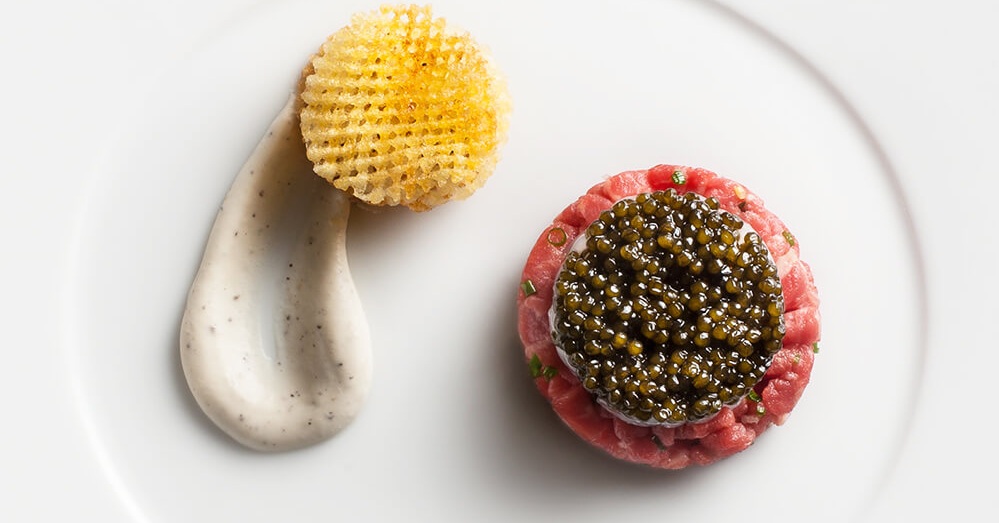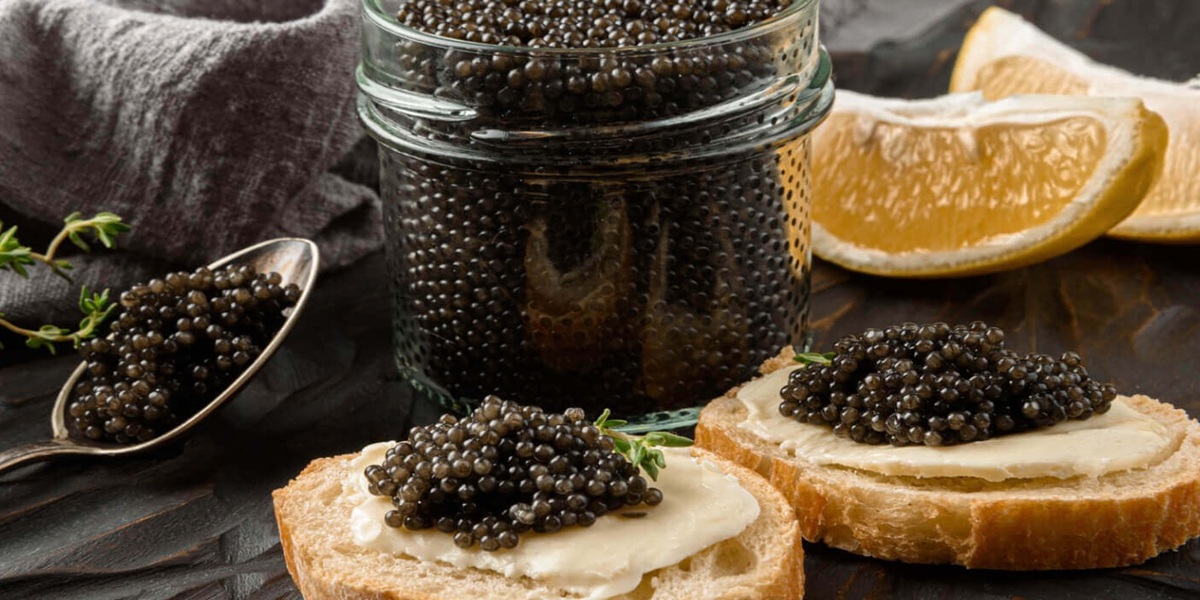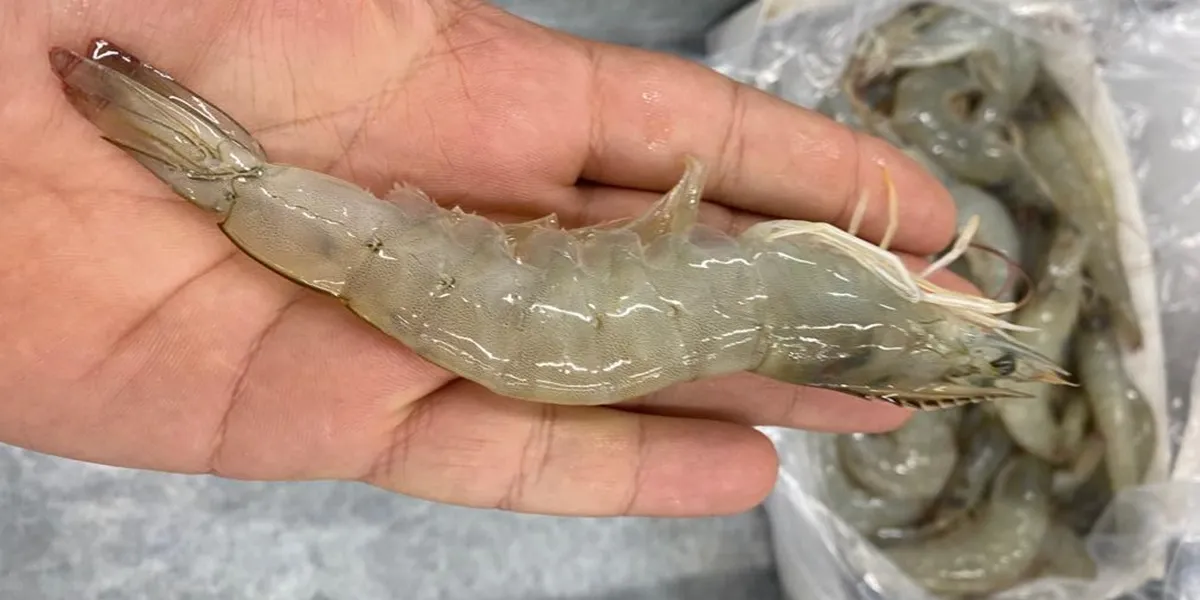Caviar has long been a symbol of luxury, refinement, and culinary sophistication. These exquisite pearls, harvested from sturgeon fish, are more than just a gourmet indulgence—they are a testament to centuries of tradition, craftsmanship, and nature’s rarest offerings. But what makes caviar eggs so special? Why are they revered by top chefs and connoisseurs around the world?
Beyond their decadent taste and velvety texture, caviar eggs are packed with essential nutrients, offering a remarkable blend of flavor and health benefits. From understanding the different types of caviar to discovering their unique properties, this guide will take you deep into the fascinating world of this prized delicacy.
If you’re curious to explore the secrets of caviar—from its rich history to the art of enjoying it properly—keep reading. Let’s uncover everything you need to know about these luxurious eggs.
What Are Caviar Eggs? Understanding the Essence of This Gourmet Delicacy
Caviar eggs, often simply called Caviar, refer to the salt-cured roe of sturgeon fish. Unlike other types of fish roe, true caviar comes exclusively from sturgeon species such as Beluga, Osetra, Sevruga, and Kaluga. These eggs are prized for their delicate membranes, smooth texture, and rich, buttery taste.
The harvesting of caviar follows a meticulous process. Wild sturgeons, historically found in the Caspian and Black Seas, were once the primary source. However, due to conservation efforts, sustainable aquaculture farms now produce high-quality caviar while protecting wild populations.
One of the most defining characteristics of caviar is its flavor profile. Depending on the species, caviar can range from mild and nutty to bold and briny. The eggs burst on the tongue, releasing layers of complex umami notes that pair exceptionally well with classic accompaniments like blinis, crème fraîche, and champagne.
Beyond its gourmet appeal, caviar is a nutrient powerhouse. It is rich in omega-3 fatty acids, essential for brain and heart health. It also contains vitamin B12, which supports nerve function and energy production, as well as antioxidants like selenium, which help combat oxidative stress.
Caviar eggs are not just a culinary indulgence—they are a perfect fusion of tradition, taste, and nutritional value. Understanding their origins and characteristics allows for a deeper appreciation of this remarkable delicacy.
Types of Caviar Eggs: Exploring the World’s Most Exquisite Varieties
Caviar eggs come in multiple varieties, each offering distinct textures, flavors, and aromas. The most prestigious types originate from sturgeon species, with the following being the most sought-after:
• Beluga Caviar: Sourced from the Beluga sturgeon, this is the rarest and most luxurious type. The eggs are large, smooth, and incredibly delicate, with a buttery texture and a mild, slightly nutty taste.
• Osetra Caviar: Known for its firm texture and golden-brown color, Osetra caviar has a complex, nutty flavor. It is highly regarded for its depth of taste and versatility in fine dining.
• Sevruga Caviar: This variety comes from the Sevruga sturgeon and has a smaller grain size. It boasts an intense, briny flavor with a strong oceanic aroma, making it a favorite among traditional caviar enthusiasts.
• Kaluga Caviar: Often referred to as “river Beluga,” Kaluga caviar offers a texture and taste similar to Beluga, with a firm bite and a creamy, lingering flavor.
Why Is Iranian Caviar the Best in the World?
Iranian caviar, particularly from the Caspian Sea, is considered the gold standard of the caviar world. Its superior flavor, texture, and history of sustainable harvesting practices set it apart from other varieties. Iranian Beluga and Osetra caviar are highly coveted for their exceptional quality and delicate profiles, making them the top choice for connoisseurs.
Each of these types varies not only in taste but also in appearance and texture. Beluga caviar, for example, features larger eggs, while Sevruga is smaller and more intensely flavored. These differences make each variety suitable for different culinary applications, from simple tastings to elaborate gourmet dishes.
The world of caviar is vast, with each variety offering a unique experience. Knowing their characteristics helps in selecting the perfect caviar for any occasion.
The Health Benefits of Caviar: A Superfood in Disguise
Caviar is more than just a delicacy—it is a nutritional powerhouse packed with essential nutrients that promote overall health.
One of the most significant benefits of caviar is its high omega-3 fatty acid content. These fatty acids are crucial for maintaining heart health, reducing inflammation, and supporting cognitive function. Regular consumption of omega-3-rich foods like caviar can help lower blood pressure and reduce the risk of cardiovascular diseases.
Caviar is also an excellent source of vitamin B12, an essential nutrient for brain function, red blood cell formation, and DNA synthesis. A small serving of caviar provides more than the daily recommended intake of B12, making it an ideal food for individuals with vitamin deficiencies.
Additionally, caviar contains selenium and iron, both of which are vital for immune function and oxygen transport in the body. The presence of antioxidants and amino acids further enhances its health benefits, contributing to better skin health, improved energy levels, and enhanced metabolic function.
The Health Benefits of Caviar: More Than Just a Luxury Food
Caviar’s nutrient-rich profile not only makes it a luxurious indulgence but also a food that nourishes the body. Whether you’re looking to boost your heart health, improve cognitive function, or enhance skin elasticity, caviar offers an array of health benefits that go beyond its status as a luxury food.
Eating caviar is not just about indulgence—it’s about nourishing the body with some of the finest nutrients nature has to offer.
How Caviar Is Harvested: The Science Behind Its Production
The process of caviar harvesting is a meticulous blend of tradition and modern innovation. Historically, wild sturgeon were caught, and their eggs were extracted manually. However, overfishing led to a decline in sturgeon populations, prompting the rise of sustainable aquaculture farms.
Today, responsible caviar farms use advanced breeding techniques to ensure the highest quality eggs without depleting natural resources. Some farms even employ no-kill extraction methods, where eggs are harvested without harming the fish.
Once harvested, the eggs undergo a delicate curing process with fine salt, which enhances their flavor while preserving freshness. The precise balance of curing determines the final texture and taste of the caviar, making this stage one of the most critical in production.
How to Identify High-Quality Caviar?
To identify high-quality caviar, focus on the texture, size, and consistency of the eggs. High-quality caviar should have firm, shiny eggs that don’t break easily. The flavor should be fresh, smooth, and balanced, with no overpowering saltiness. The curing process and harvesting method, such as those used in Iranian caviar production, can significantly impact the overall quality and taste.
Understanding the science behind caviar harvesting highlights the dedication and craftsmanship required to bring this delicacy to the finest tables around the world.
How to Eat Caviar Properly: The Ultimate Guide for Beginners
Caviar is best enjoyed using traditional etiquette to preserve its delicate flavors. Serving it cold, never frozen, ensures optimal texture. It is typically eaten with a mother-of-pearl spoon to prevent metallic reactions that can alter the taste.
Classic pairings include blinis, toast points, and crème fraîche, which complement the rich, buttery notes of the eggs. High-end pairings include champagne and vodka, both of which enhance the umami flavor of caviar.
When tasting caviar, it is best to let the eggs rest on the tongue, allowing them to burst naturally and release their nuanced flavors. Avoid excessive chewing, as this can diminish the luxurious mouthfeel.
By following these simple steps, anyone can elevate their caviar experience to a gourmet level.
How to Store Caviar Properly: The Key to Preserving Freshness and Flavor
Proper storage is crucial to maintaining the delicate texture, taste, and aroma of caviar. Unlike many other gourmet foods, caviar is highly perishable and requires meticulous handling to ensure it retains its premium quality.
The most important rule of caviar storage is temperature control. Caviar should be kept at 28–32°F (-2 to 0°C), ideally stored in the coldest part of the refrigerator. If stored too warm, the eggs will break down, losing their signature burst and luxurious texture. However, freezing caviar is not recommended as it can alter the consistency of the eggs.
When storing unopened caviar, it is best to keep it in its original, vacuum-sealed tin. The airtight seal prevents oxidation and maintains the integrity of the delicate eggs. Once opened, caviar should be consumed within 48 hours for optimal freshness. After this period, the eggs may lose their distinct flavor and texture.
To preserve an opened tin of caviar, press a piece of plastic wrap directly onto the surface of the eggs before sealing the lid. This prevents air exposure, which can degrade the caviar’s quality. Additionally, always use a non-metallic spoon, such as mother-of-pearl or horn, to prevent unwanted flavor alterations caused by metal interactions.
If you need to transport caviar, it should always be kept in an insulated cooler with ice packs to maintain a consistent low temperature. Any fluctuations in temperature can accelerate spoilage, reducing both taste and texture.
By following these storage techniques, you can extend the shelf life of your caviar while ensuring it remains as exquisite as the moment it was harvested. Proper handling is essential to fully appreciate this luxurious delicacy.
Caviar and Fine Dining: How the World’s Best Chefs Use It in Gourmet Cuisine
Caviar is a cornerstone of fine dining, celebrated by top chefs worldwide for its delicate texture, rich umami flavor, and unparalleled elegance. Whether served as a standalone delicacy or incorporated into elaborate dishes, caviar elevates any culinary experience.
The most traditional way to serve caviar in fine dining is on a bed of crushed ice, accompanied by blinis, toast points, or crème fraîche. This method allows the pure flavors of the caviar to shine without overpowering its delicate profile.
In Michelin-starred restaurants, chefs take caviar to the next level by pairing it with unexpected ingredients. One of the most famous examples is caviar-topped wagyu beef tartare, where the eggs add a luxurious saltiness that enhances the meat’s umami notes. Another renowned dish is caviar with sea urchin (uni), a fusion of briny flavors that creates a symphony of marine richness.
Molecular gastronomy has also embraced caviar, using techniques like spherification to mimic the texture of real caviar with other ingredients. Some chefs create truffle-infused caviar pearls or even vegetarian caviar alternatives using seaweed extracts.
Beyond traditional and modern approaches, caviar is often used to elevate classic dishes. Some chefs incorporate it into creamy pasta sauces, potato-based dishes, or even scrambled eggs to add a refined touch. The key to using caviar in fine dining is balance—it should enhance, not overshadow, the dish.
Whether in a minimalist presentation or an avant-garde dish, caviar remains a symbol of culinary excellence, reserved for the finest dining experiences around the world.

Myths and Misconceptions About Caviar: Separating Fact from Fiction
Caviar is one of the most luxurious and misunderstood foods in the world. With its reputation for exclusivity and refinement, several myths have developed around this delicacy. Let’s separate fact from fiction.
One common myth is that only Beluga caviar is authentic. While Beluga caviar is one of the rarest and most sought-after types, true caviar comes from multiple sturgeon species, including Osetra, Sevruga, and Kaluga. Each variety offers a distinct taste and texture, catering to different preferences.
Another misconception is that caviar should always be served with a silver spoon. In reality, metal spoons (especially silver) can react with caviar, altering its flavor. This is why mother-of-pearl, glass, or bone spoons are traditionally used.
Many people also believe that caviar must always be eaten on its own. While purists may prefer this method, caviar pairs exceptionally well with blinis, crème fraîche, eggs, and even certain seafood dishes. The key is to choose pairings that complement its delicate flavor without overwhelming it.
There is also a misconception that caviar loses its flavor after opening. While caviar should be consumed within 48 hours of opening, proper storage techniques—such as keeping it tightly sealed and refrigerated at the correct temperature—can help maintain its quality.
Finally, some assume that caviar is only for the elite. While high-quality caviar remains a luxury, advancements in sustainable farming have made it more accessible than ever. Ethical aquaculture has expanded availability while maintaining high standards for quality and taste.
By debunking these myths, we gain a deeper appreciation for caviar as a culinary treasure rather than an unattainable indulgence.
Sustainable Caviar: How Ethical Farming Is Changing the Industry
The caviar industry has undergone significant changes over the years, shifting from traditional wild harvesting to sustainable aquaculture. This shift is crucial in protecting sturgeon populations while ensuring the continued availability of high-quality caviar.
Sturgeon, the fish species responsible for producing caviar, has faced severe overfishing, leading to population declines. In response, caviar farms now use controlled breeding programs to raise sturgeon without harming wild populations. These farms prioritize environmental sustainability, water quality, and ethical harvesting methods.
One of the most groundbreaking developments in sustainable caviar production is no-kill caviar extraction. Unlike traditional methods, where fish are sacrificed to obtain their eggs, some farms now use techniques that allow the fish to continue living and producing multiple caviar cycles. This method significantly reduces waste and supports conservation efforts.
Sustainable caviar farming also helps maintain consistent quality. By controlling diet, water purity, and maturation time, farms can ensure that the caviar produced meets the highest standards. Additionally, traceability programs allow consumers to verify the origins of their caviar, ensuring ethical sourcing.
The future of caviar depends on responsible practices. With advances in sustainable aquaculture, it is now possible to enjoy this delicacy while preserving the species that make it possible.
The Future of Caviar: Innovations and Emerging Trends
The caviar industry is continuously evolving, embracing new technologies and sustainability practices to meet modern demands. Several emerging trends are shaping the future of this luxurious delicacy.
One of the most significant innovations is lab-grown caviar. Scientists are experimenting with cellular agriculture to create caviar without relying on live fish. This breakthrough could revolutionize the industry by offering a cruelty-free, environmentally friendly alternative that retains the same texture and taste as traditional caviar.
Another major trend is the rise of plant-based caviar alternatives. Made from seaweed, algae, or molecular gastronomy techniques, these substitutes mimic the texture and briny flavor of real caviar while catering to vegan consumers.
Advancements in sustainable farming continue to play a crucial role. Many caviar farms are adopting closed-loop systems that recycle water, reduce waste, and minimize environmental impact. Some are even integrating AI-driven monitoring systems to track fish health and optimize egg quality.
Additionally, culinary trends are introducing caviar into more diverse cuisines. While traditionally associated with European fine dining, chefs worldwide are incorporating caviar into Japanese, Middle Eastern, and fusion dishes.
With a focus on innovation, sustainability, and accessibility, the future of caviar is poised to be more ethical, diverse, and exciting than ever before.
Caviar: A Timeless Symbol of Luxury and Excellence
Caviar eggs are more than just a gourmet delight; they represent a fusion of nature’s finest offerings, rich traditions, and exceptional craftsmanship. From their diverse varieties to their impressive health benefits, caviar remains one of the world’s most coveted culinary treasures.
By understanding how to choose, store, and enjoy caviar, you can truly appreciate its unmatched elegance. Whether you are a seasoned connoisseur or a first-time taster, the world of caviar awaits—offering an experience unlike any other.




